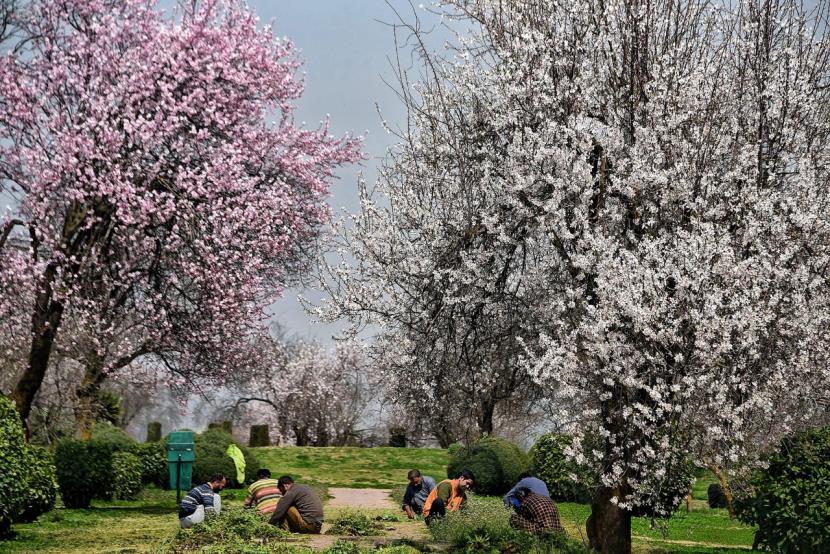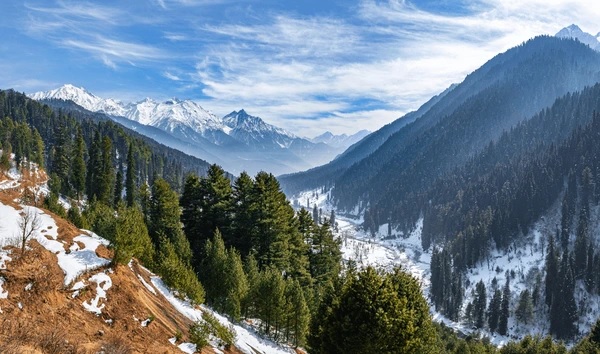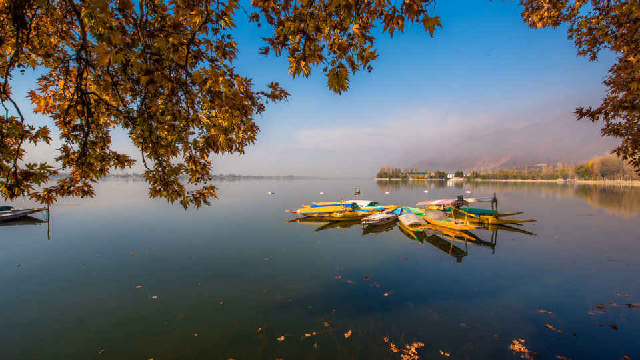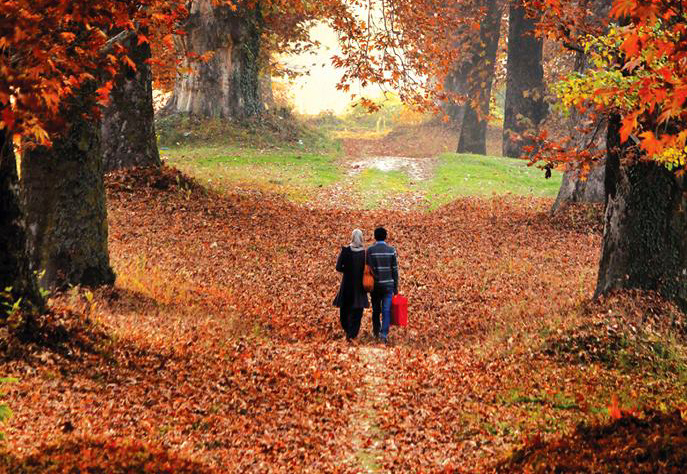Kashmir’s Almond Blossoms: Nature’s Forgotten Masterpiece
Srinagar 25 March 2025: Move over, tulips! While the Dutch may have their floral fame, Kashmir’s almond blossoms are spring’s best-kept secret. Every March, the valley transforms into a pastel paradise, where delicate pink and white blooms blanket orchards, gardens, and mountainsides. This ephemeral spectacle—lasting just 2–3 weeks—heralds the end of harsh winters and breathes life into Kashmir’s cultural and culinary soul. Forget crowded tulip gardens; here’s why almond blossoms deserve your bucket list spotlight.
The Almond Blossom Chronicles: A History Rooted in Beauty
Almond trees arrived in Kashmir via the Silk Road, gifted by Persian travelers centuries ago. Thriving in the region’s cool climate and fertile soil, they became symbols of resilience and renewal. The Mughals, enchanted by their beauty, planted vast orchards, integrating them into gardens like Shalimar Bagh. Today, these trees are more than scenic—they’re lifelines for local economies and storytellers of Kashmir’s agrarian heritage.
Did You Know?
- Almonds are called “badam” in Kashmiri, derived from the Persian “bādām.”
- The blossoms’ first bloom is celebrated as “Badam Waer” (Almond Spring), a traditional festival marking renewal.
Also Read | Beyond Tulips: Discover Kashmir’s Almond Blossom Paradise – Badamwari Garden Unveiled
Where to Witness the Almond Blossom Magic
01. Badamwari Garden, Srinagar: The Crown Jewel
Nestled beneath Hari Parbat fort, Badamwari Garden is Kashmir’s answer to Japan’s cherry blossoms. With over 1,200 almond trees, it’s a symphony of pink and white hues. Pro Tip: Visit at sunrise for golden light filtering through petals, and enjoy a Kahwa tea picnic.
Highlights:
- Historical Charm: Restored in 2008, the garden dates back to the 14th century.
- Cultural Events: Folk music and dance performances during Badam Waer (March 15–30).
02. Pulwama & Shopian: The Rustic Retreats
Ditch the crowds for Pulwama’s “Almond Valley” and Shopian’s hidden orchards. These districts, famed for apples and saffron, offer serene blossom vistas. Local Secret: Hire a bicycle in Pulwama to explore villages like Tral, where blossoms frame snow-capped peaks.
03. Ganderbal’s Lar & Waliwar: Off-the-Grid Wonder
In Ganderbal, Lar and Waliwar villages are untouched by mass tourism. Walk through family-owned orchards, where farmers share stories of almond cultivation. Photography Tip: Use a macro lens to capture bees pollinating blooms—a sign of the coming harvest.
04. Dachi Gam: A Spiritual Bloom
Near Srinagar, the Sufi shrine of Dachi Gam is surrounded by almond groves. Combine spirituality with nature by joining locals in evening prayers under blossoming trees.
Also Read | Blossoming Splendor: A Complete Guide to Srinagar’s Badamwari Garden – Kashmir’s Almond Paradise in Spring
From Blossom to Plate: Almonds in Kashmiri Culture & Cuisine
Almonds are Kashmir’s culinary gold. From royal feasts to humble homes, they add richness to dishes, symbolizing prosperity and health.
Signature Almond-Based Dishes
- Rogan Josh: Slow-cooked lamb curry thickened with almond paste.
- Shufta: A celebratory dessert mixing almonds, spices, and rose petals.
- Badam Halwa: A winter staple, served warm with saffron and ghee.
- Kahwa: Green tea infused with almonds, cardamom, and cinnamon.
Cultural Tidbit:
Almonds are integral to Kashmiri weddings. A gift of sugar-coated almonds (noon chai) signifies sweetness in the couple’s journey.
Economic Impact
- Kashmir produces 98% of India’s almonds, supporting 50,000+ families.
- The annual harvest (July-August) sees almonds exported globally, boosting the region’s economy.
Why Almond Blossoms > Tulips: The Unbeatable Allure
- Exclusivity: Tulip festivals draw thousands, but almond blooms offer intimate, crowd-free moments.
- Cultural Depth: Blossoms are tied to centuries-old traditions, unlike tulips’ ornamental role.
- Sensory Symphony: The delicate almond fragrance and rustle of petals create a multisensory experience.
Sustainability Note:
Almond trees prevent soil erosion in Kashmir’s fragile ecosystems, making them environmental heroes.
Also Read | Kashmir’s Tulip Festival: 6 Captivating Experiences to Embrace Paradise on Earth
Photographing the Blooms: Pro Tips for Instagram-Worthy Shots
- Golden Hours: Shoot during sunrise (6–7 AM) or sunset (5–6 PM) for soft, warm lighting.
- Angles: Capture low-angle shots with blossoms against Himalayan peaks.
- Drones: Use drone photography to showcase the vastness of Badamwari’s floral carpets.
Planning Your Trip: A 3-Day Almond Blossom Itinerary
Day 1: Srinagar’s Blossom Trail
- Morning: Badamwari Garden + Heritage walk in Old Srinagar.
- Afternoon: Shikara ride on Dal Lake, visit floating flower markets.
- Evening: Sunset at Shalimar Bagh.
Day 2: Countryside Immersion
- Day trip to Pulwama (1-hour drive). Cycle through almond orchards, visit a saffron farm.
- Lunch: Home-cooked Rogan Josh with a local family.
Day 3: Spiritual & Scenic Ganderbal
- Explore Lar village orchards, picnic by Sindh River.
- Evening: Dachi Gam shrine for cultural immersion.
Also Read | Top 5 Must-Do Activities in Kashmir for First-Time Travelers
Preserving the Blossoms: Sustainable Travel Practices
- Stay Local: Book homestays like Almond Grove Homestead in Pulwama.
- Respect Nature: Avoid plucking blossoms; stick to marked trails.
- Support Artisans: Buy almond wood carvings or Pashmina shawls to boost local crafts.
Final Thoughts: Embrace the Ephemeral
Kashmir’s almond blossoms are more than a visual delight—they’re a heartbeat of culture, resilience, and fleeting beauty. As global travelers seek authenticity, this spring spectacle offers a rare blend of serenity and soul. Pack your bags, charge your camera, and witness a season where every petal tells a story.




